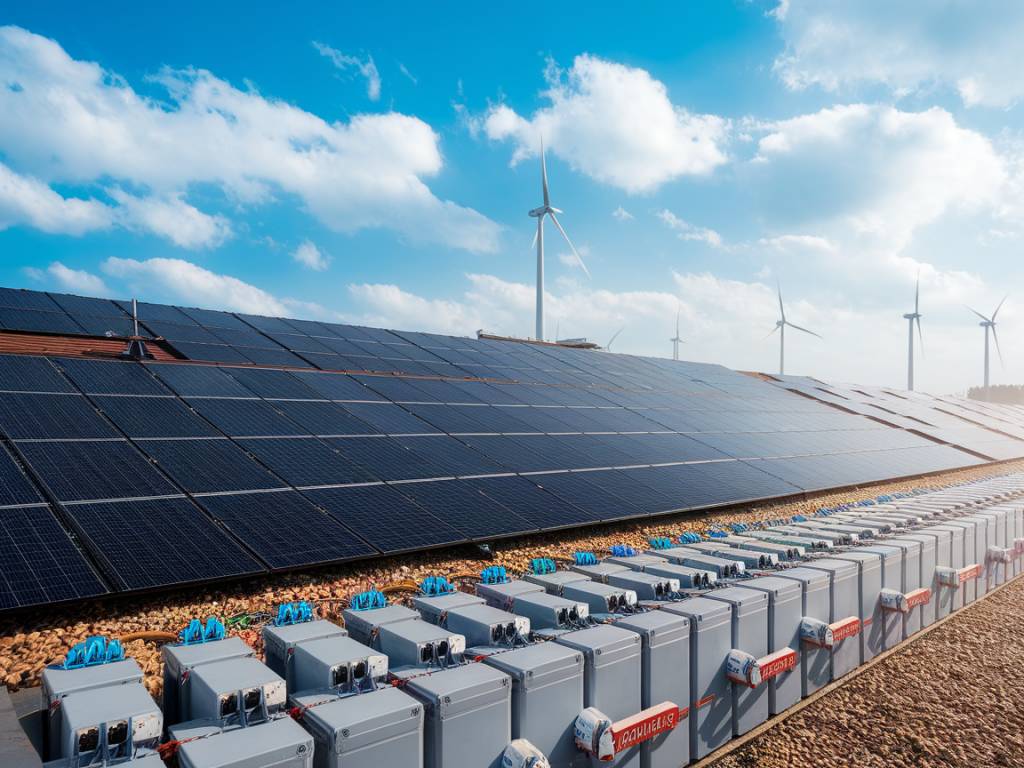Why Energy Storage is Key to a Renewable Future
As renewable energy sources like solar and wind continue to scale up, one challenge remains persistent: how do we store that energy when the sun isn’t shining or the wind isn’t blowing? Battery storage systems, hydrogen fuel cells, thermal energy storage—these aren’t just buzzwords; they’re pivotal technologies shaping the clean energy transition. But why is energy storage so crucial?
Imagine this: A solar farm generates an abundance of electricity on a sunny afternoon, but once night falls, that power is no longer accessible unless it has been stored. Without viable energy storage solutions, we risk wasting the precious renewable energy we produce. Energy storage smooths out the peaks and troughs, offering stability to power grids and reducing reliance on fossil fuels during periods of low renewable energy production. It’s the backbone of a future powered entirely by renewables.
Innovative Energy Storage Technologies Changing the Game
The world of energy storage is expanding at an incredible pace, with innovations emerging from labs, startups, and major corporations alike. Let’s delve into some of the most promising advancements:
Lithium-Ion Batteries: The Market Leader
Lithium-ion batteries are, without question, the reigning champion of energy storage. They power everything from smartphones to electric vehicles and are increasingly deployed in utility-scale projects. Why? They’re efficient, durable, and have seen significant cost reductions over the last decade.
Take Tesla’s Powerwall, for example. This home-based energy storage solution allows homeowners to store excess solar energy during the day and use it at night or during outages. However, lithium-ion batteries come with challenges, including resource scarcity (lithium and cobalt) and environmental concerns during production.
Flow Batteries: Long-Life Alternatives
Unlike their lithium-ion counterparts, flow batteries—such as vanadium redox flow systems—store energy in external tanks of liquid electrolytes. This design allows for almost unlimited scalability and an impressively long lifecycle. Perfect for stationary, large-scale energy storage, flow batteries could play a critical role in stabilizing energy grids reliant on renewables.
Here’s a fun fact: Some researchers are even exploring organic flow batteries that use quinones, molecules derived from plants! Imagine a future where your energy storage system is powered by materials found in nature.
Hydrogen: The Fuel of Tomorrow?
Hydrogen often gets press as the ultimate clean energy solution, and for a good reason. Excess renewable energy can be used to electrolyze water, producing green hydrogen that can later be used in fuel cells to generate electricity. Essentially, it functions as a long-term energy storage solution with virtually no emissions.
Countries like Japan and Germany are already investing heavily in hydrogen infrastructure, envisioning it as a cornerstone of their future energy systems. However, challenges like inefficiency and the high costs of electrolysis still need to be addressed.
Thermal Energy Storage: Heat and Cool When Needed
Thermal energy storage systems store heat or cold, which can later be used for power generation or to regulate building temperatures. For example, molten salt is a popular medium in concentrated solar power (CSP) plants. It retains heat during sunny hours and releases it to generate electricity after the sun sets.
Closer to home, ice storage systems are being used in commercial buildings to save on cooling costs. These systems produce ice during off-peak energy hours and use it for air conditioning during the day, reducing electrical demand when it’s most expensive.
Gravity-Based Systems: Energy Storage Down to Earth
What goes up must come down—gravity-based energy storage capitalizes on this basic principle of physics. Companies like Energy Vault are developing systems where heavy blocks are lifted using surplus renewable energy and then lowered to generate power when needed. The concept is simple, yet its scalability and low environmental impact make it a compelling contender in the energy storage race.
Plus, these systems can use recycled materials for the weighted blocks, adding an extra layer of sustainability. Cool, right?
The Role of Artificial Intelligence in Energy Storage
Artificial intelligence (AI) is stepping in to optimize energy storage and distribution like never before. AI algorithms can predict energy consumption patterns, weather conditions, and grid demand, enabling smarter storage management. This reduces wastage, maximizes efficiency, and even extends the lifespan of storage systems.
For instance, Google’s DeepMind has partnered with renewable energy providers to optimize wind power distribution. By using AI-powered forecasts, they predict energy output 36 hours in advance, making it easier to store and distribute wind energy effectively.
Energy Storage and Everyday Life
While much of the conversation around energy storage technology focuses on large-scale applications, it’s worth noting how these innovations impact daily life. From residential solar batteries to electric vehicle (EV) charging stations, energy storage technologies are becoming more accessible and integrated into household routines.
Imagine never worrying about a power outage because your home is fitted with your very own energy storage system. Or consider EV owners who can charge their cars during off-peak hours thanks to smart storage systems that store energy when it’s cheapest. These technologies are not just for corporations or governments; they’re shaping how we live, work, and consume energy.
Future Possibilities and Why It All Matters
Energy storage innovations are paving the way for an electricity system that is not only greener but also more resilient and adaptable. As we push towards global targets for net-zero emissions, these technologies will be the linchpins that ensure renewable energy sources can meet our growing power demands.
So, the next time you see a wind turbine spinning in the breeze or a solar panel shimmering in the sun, remember—what really makes them powerful isn’t just their ability to generate energy but the groundbreaking storage systems that ensure we can use that energy anytime, anywhere.
In the end, energy storage is more than just a technical solution. It’s a promise of sustainability, stability, and a world that’s ready for a renewable future.
